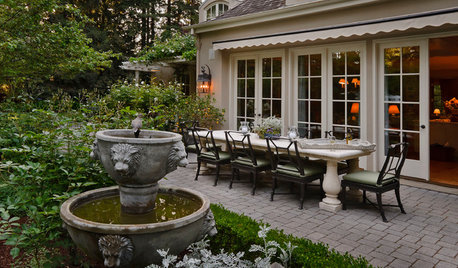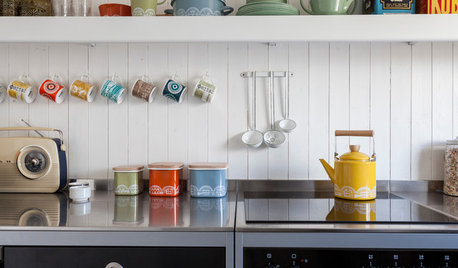Yukon Gold from the SFG
jbest123
15 years ago
Related Stories

LIFEHouzz Call: Show Us the House You Grew Up In
Share a photo and story about your childhood home. Does it influence your design tastes today?
Full Story
OUTDOOR ACCESSORIES10 Fountains to Bring Your Garden to Life
Water elements can be a dynamic focal point in your outdoor room
Full Story
ARCHITECTUREStates of Style: The Alaskan Frontier
All isn’t raw and rustic in this frontier state. See how nature’s influence meets eclectic style in Alaskan homes
Full Story
LIFEHow Do You Make Your Tea and Coffee in the Morning?
A morning cup is a must for many, and preparation comes in many guises. We look at coffee and tea habits across the Houzz community
Full Story
COLOR11 Terrific Paint Color Matches for Wood Details
Pair your wood trim and cabinets with the right shade of wall paint to bring out the beauty in both
Full Story
INSIDE HOUZZDecorating Trends: A New Houzz Survey Shows What Homeowners Want
Is the TV gaining or losing ground? Are women or men trendier? Find out and learn more about people’s decorating plans right here
Full Story
KITCHEN DESIGNKitchen Recipes: Secret Ingredients of 5 One-of-a-Kind Cooking Spaces
Learn what went into these cooks’ kitchens — and what comes out of them
Full Story
FUN HOUZZHere's Looking at You: A Mirror Personality Quiz
What does your bathroom mirror preference say about you? We offer some speculations to go with 11 very different mirror styles
Full Story
PETSGood Dog! Cute Pooches at Home
The dogs of Houzz take you on a tour of their homes and show you where they lounge, eat, play, bathe and nap
Full Story
LIFETime Travel to Houzzers' Childhood Homes, Part 2
Catch a glimpse of kit houses, bungalows, Tudors and more just as they were way back when — and listen in on the intriguing personal stories
Full Story





angelady777 (Angela) - Zone 6
carolynp
Related Professionals
Surprise Landscape Architects & Landscape Designers · Chelmsford Landscape Contractors · Clearlake Landscape Contractors · Nanuet Landscape Contractors · Newberg Landscape Contractors · Berkeley Fence Contractors · Gresham Fence Contractors · Lexington Fence Contractors · Oregon City Fence Contractors · River Edge Fence Contractors · Tavares Fence Contractors · Towson Fence Contractors · Turlock Fence Contractors · West Jordan Fence Contractors · Windsor Fence Contractorsmedontdo
jbest123Original Author
engineeredgarden
jbest123Original Author
engineeredgarden
carolynp
sinfonian
jbest123Original Author
medontdo
carolynp
engineeredgarden
jbest123Original Author
engineeredgarden
medontdo
jbest123Original Author
carolynp
sinfonian
anniesgranny
engineeredgarden
engineeredgarden
anniesgranny
engineeredgarden
jbest123Original Author
engineeredgarden
susancol
garden_chef
engineeredgarden
anniesgranny
sinfonian
anniesgranny
garden_chef
sinfonian
jbest123Original Author
anniesgranny
garden_chef
sinfonian
garden_chef